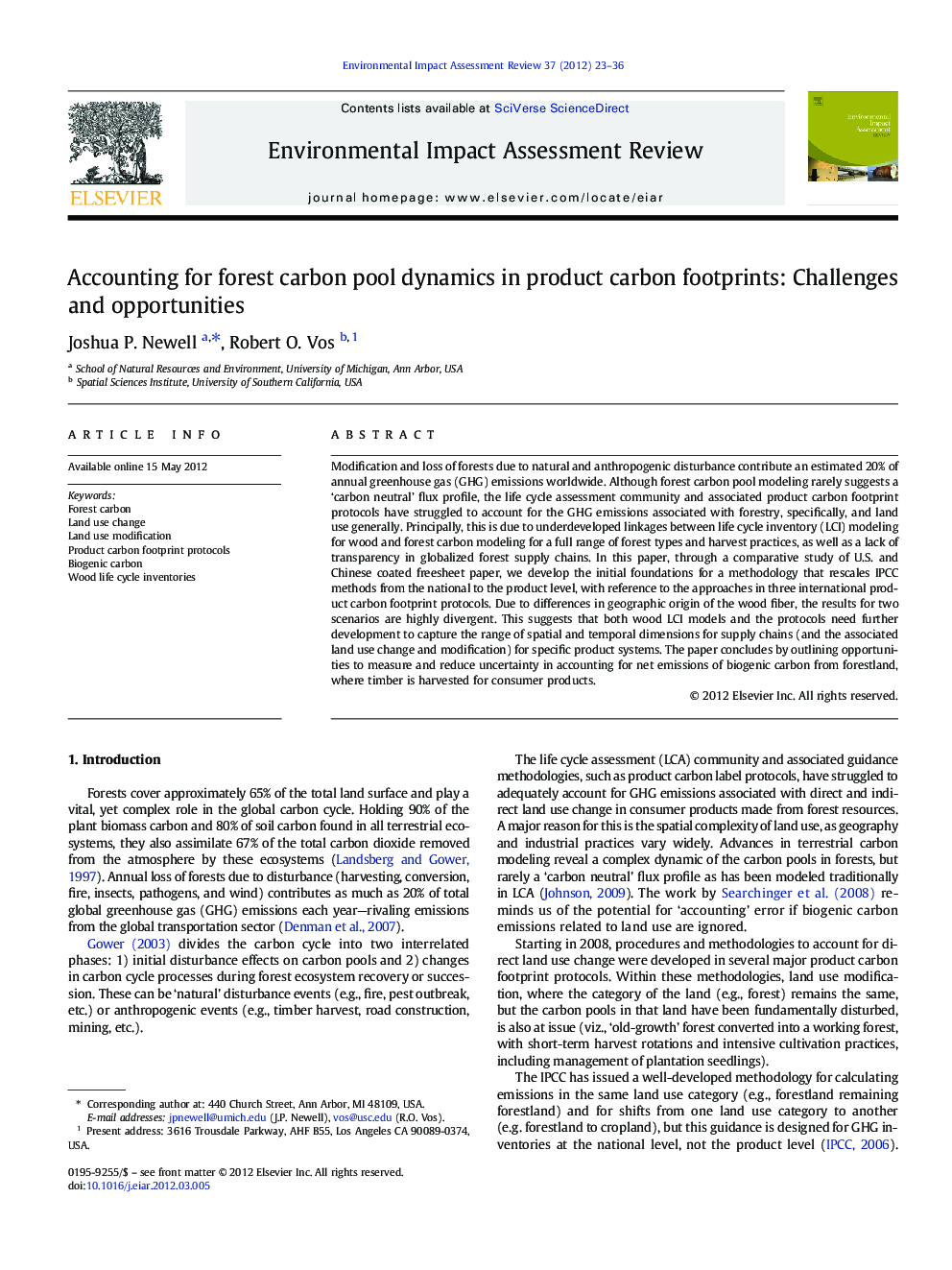| Article ID | Journal | Published Year | Pages | File Type |
|---|---|---|---|---|
| 1052878 | Environmental Impact Assessment Review | 2012 | 14 Pages |
Modification and loss of forests due to natural and anthropogenic disturbance contribute an estimated 20% of annual greenhouse gas (GHG) emissions worldwide. Although forest carbon pool modeling rarely suggests a ‘carbon neutral’ flux profile, the life cycle assessment community and associated product carbon footprint protocols have struggled to account for the GHG emissions associated with forestry, specifically, and land use generally. Principally, this is due to underdeveloped linkages between life cycle inventory (LCI) modeling for wood and forest carbon modeling for a full range of forest types and harvest practices, as well as a lack of transparency in globalized forest supply chains. In this paper, through a comparative study of U.S. and Chinese coated freesheet paper, we develop the initial foundations for a methodology that rescales IPCC methods from the national to the product level, with reference to the approaches in three international product carbon footprint protocols. Due to differences in geographic origin of the wood fiber, the results for two scenarios are highly divergent. This suggests that both wood LCI models and the protocols need further development to capture the range of spatial and temporal dimensions for supply chains (and the associated land use change and modification) for specific product systems. The paper concludes by outlining opportunities to measure and reduce uncertainty in accounting for net emissions of biogenic carbon from forestland, where timber is harvested for consumer products.
► Typical life cycle assessment practice for consumer products often excludes significant land use change emissions when estimating carbon footprints. ► The article provides a methodology to rescale IPCC guidelines for product-level carbon footprints. ► Life cycle inventories and product carbon footprint protocols need more comprehensive land use-related accounting. ► Interdisciplinary collaboration linking the LCA and forest carbon modeling communities is necessary.
